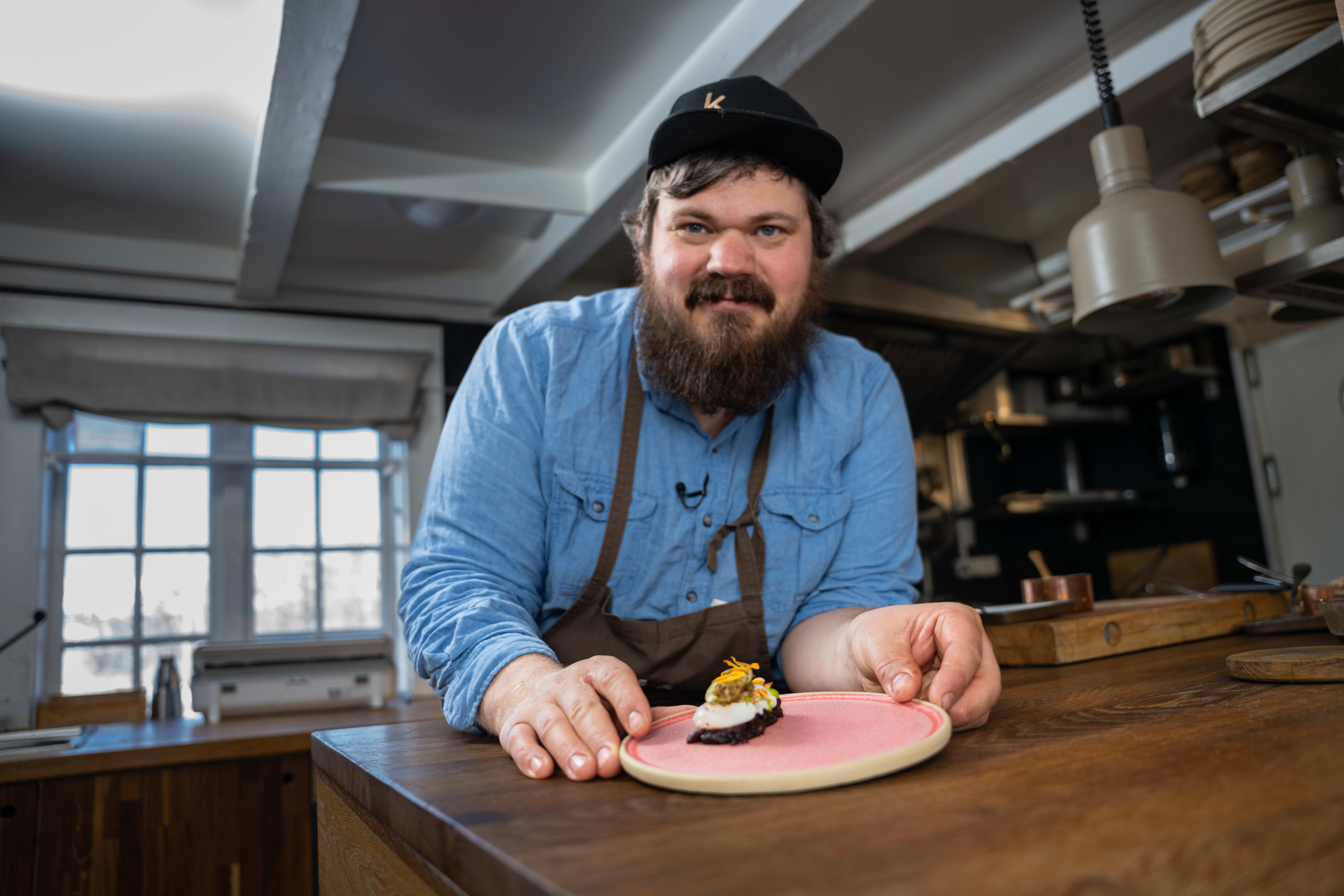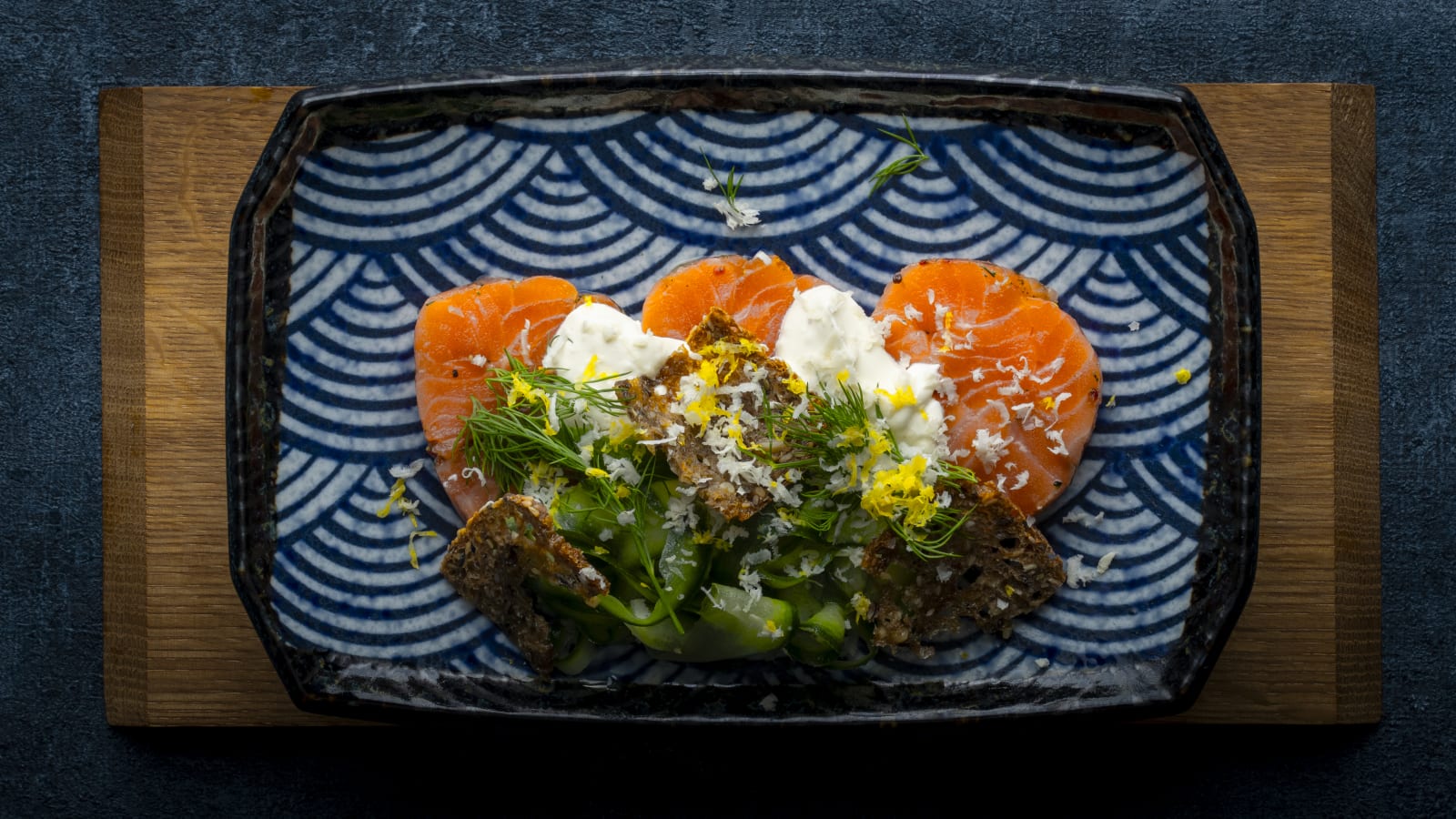The star chef who moved back home to become a farmer
One of Norway's best chefs, Halvar Ellingsen, left the capital and moved back home to the north to run a farm. His farmhouse has a kitchen that is unlike anything you have seen before.
At the very edge of the ocean, in a small place that counts less than 400 mailboxes, you will find Halvar's roots. It was here that his third great grandfather Christoffer Ellingsen came across a farm called Kvitnes Gård which he then purchased. He saw opportunities that no one else saw in the small property.
Soon, Kvitnes was considered to be a large farm in Vesterålen and was a port of call for billowing steamships carrying merchants from European cities such as Copenhagen, Amsterdam, and Lisbon.
This continued decade after decade. But the farm at Kvitnes eventually declined, falling into disrepair and disappearing from the Ellingsen family.
"We keep Christoffer's creative drive alive today. And in his spirit, we are committed to being equally ambitious and creative," says Halvar.
Michelin-starred restaurants Bagatelle and Ylajali
But for a long time, Halvar didn't know that he had roots on Kvitnes Gård. He worked long and intense days at the renowned Michelin-starred restaurants Bagatelle and Ylajali in Oslo, competed on the national culinary team, and was honoured as Norway's best chef in the Norwegian championship, becoming the youngest chef in the nation to hold the title. Perhaps that's not so strange for someone who decided to become a chef when he was just 6 years old.
Kvitnes Gård in Vesterålen.
Then one day he realized that he wanted to go back home. He wanted to do something else. Build something from the ground up. Create something of his own. Around the same time, the family that now owns Kvitnes Gård contacted Halvar. And the rest is history. Almost two hundred years later, there is once again a visionary Ellingsen who is a big farmer and restaurateur at Kvitnes. Once again, guests are coming from far and wide to the small village.
"I eventually gained a different focus as a chef. The food we serve should tell a story. There should be a meaning behind everything that's on the plate. It was a natural time to take the plunge and move back home," says Halvar.
"Look over there. That's a tiny lamb," chuckles Halvar, pointing while carrying his young son in his arms. Today, the boy has joined his dad both on the farm and in the kitchen.
– We are running a farm
At Kvitnes, almost the entire restaurant menu is harvested from within the farm's own fence posts. Quail, Mangalica, 80 winter-fed wild sheep, and at least as many vegetables and herbs. Here, everyone has to contribute to the farm work, including both servers and cooks.

Chef Halvar Ellingsen, Kvitnes Gård.
"We aren't just running a restaurant and accommodation. We are also running a farm. We try to be self-sufficient in most things. It is the surroundings and the farm that determine what we have on the menu. It is nature that decides. And as we know, nature is uncompromising," says Halvar.
He is equally uncompromising himself. All twenty employees, both cooks and servers, are involved in every aspect of the farm. Weeding, sowing and planting, and taking care of the animals. Halvar believes that everyone needs to contribute here on the farm.
It’s an unpretentious, but beautiful, authentic, and historic Northern Norwegian farm where the food could hardly be more locally sourced. The distance from the vegetable garden to the kitchen is very short.
"We don't hide our ingredients behind lots of techniques and foam and stuff. With us, a celeriac should be allowed to look like a celeriac. It tastes more than good enough on its own. I'm tired of the word 'sustainability'. We want to show sustainability in practice," says the chef, as he shows us around the fertile area between the farmhouse and the sea.
– We will never finish developing Kvitnes
Halvar affectionately scratches a charming small, grunting Mangalica behind its ear.
"Here we have our Mangalicas. They make unimaginably good food. The meat is red and doesn't look like regular pork," says Halvar.

"We will never finish developing Kvitnes", says Halvar Ellingsen.
Even the vegetables here are something unto themselves.
"We have sun around the clock during the summer, which allows the vegetables to develop even more flavour," he says.
It is said that San Sebastián in Spain has the most Michelin stars in the world – per capita. Many people talk about how Guide Michelin has been very negligent in not having made the 200-kilometre trip north of the Arctic Circle. With just one star, idyllic Kvitnes with its 400 souls would beat the Spanish culinary city by a wide margin.
But a star isn't Halvar's main focus.
"It would of course be nice to receive a visit from the red French book, but our vision is first and foremost to create a very good restaurant," says Halvar.
He adds:
"I'm looking to create something. And here we get to create something that never ends. We will never finish developing Kvitnes."

Chef Halvar Ellingsen: – Nice colour, texture, taste, and structure
Star chef Halvar Ellingsen has built Kvitnes farm in Vesterålen into one of the country's most renowned restaurants. It is only natural that he should get to taste one of the very first salmon from Andfjord Salmon.
Recent recipes

Recipes
Salmon ceviche with romaine lettuce and mango

Recipes
Marinated salmon with horseradish cream, dill, and rye bread...

Recipes
Savoury waffles and lemon pepper salmon

Recipes
Crispy tostadas with marinated salmon

Recipes
"Marry me salmon" from Andfjord Salmon

Recipes
Club Sandwich from 69 degrees north

Andfjord Salmon is a Norwegian company established in 2014. The company is listed on the Oslo Stock Exchange (ANDF), and based in Kvalnes on the northernmost island of Andøya in Vesterålen, Norway.
